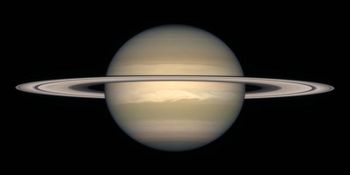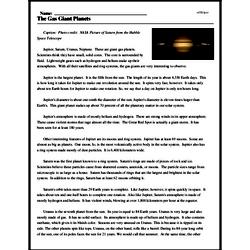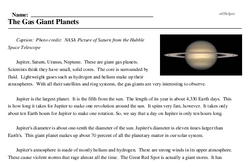The Gas Giant Planets
Caption: Photo credit: NASA Picture of Saturn from the Hubble Space Telescope
Jupiter, Saturn, Uranus, Neptune. These are giant gas planets. Scientists think they have small, solid cores. The core is surrounded by fluid. Lightweight gases such as hydrogen and helium make up their atmospheres. With all their satellites and ring systems, the gas giants are very interesting to observe.
Jupiter is the largest planet. It is the fifth from the sun. The length of its year is about 4,330 Earth days. This is how long it takes for Jupiter to make one revolution around the sun. It spins very fast, however. It takes only about ten Earth hours for Jupiter to make one rotation. So, we say that a day on Jupiter is only ten hours long.
Jupiter's diameter is about one-tenth the diameter of the sun. Jupiter's diameter is eleven times larger than Earth's. This giant planet makes up about 70 percent of all the planetary matter in our solar system.
Jupiter's atmosphere is made of mostly helium and hydrogen. There are strong winds in its upper atmosphere. These cause violent storms that rage almost all the time. The Great Red Spot is actually a giant storm. It has been seen for at least 180 years.




